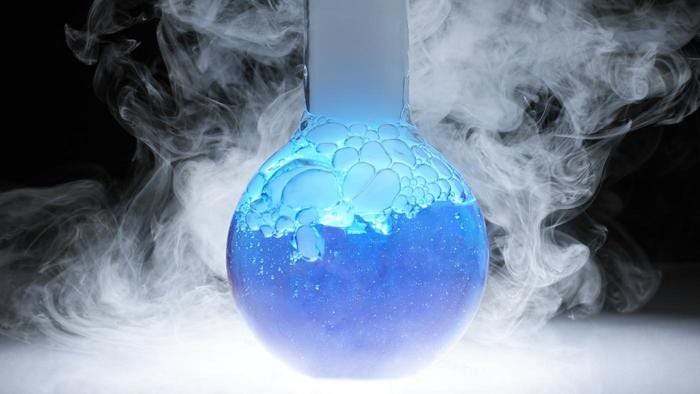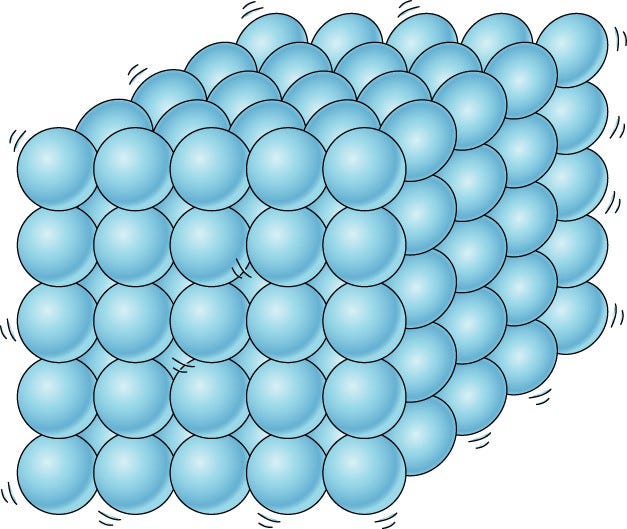What do startups and physics have in common?
How a startup transitions between states of matter
How a startup transitions between states of matter

We recently went through a strategy deep dive in one of our portfolio companies to enable the founders and the team to regain their purpose, be more productive and communicate better.
After one of our sessions, I was thinking about the experience that we’d just gone through and what each person in the company must feel like.
The initial state
When we started, the conversations often lacked direction and each person only saw things from their own perspective. The roles, including that of the CEO, were loosely defined and the whole team was just bumping into each other randomly. After an initial creative and collaborative phase, the company had lost momentum where the sum of efforts amounted to zero. When discussing important issues, you could feel the temperature rising in the room. Employee attrition was picking up and even one of the founders threatened to leave.
This initial state is what I call the “gas state”. It’s a random movement of people within a loosely defined legal entity shaped around a vision. Like gas, when the temperature rises enough, some parts exit.
Miraculously, this is when a company is most creative. People and ideas bounce around and these random collisions result in sparks of potentially world changing products.
The “ideal” state
But this is clearly not sustainable. We know if we leave gas on it’s own without a controlled container, it will evaporate. A company in this state, needs to cool down and have more discipline per part to give it more force as a whole in a certain direction.
In other words, it needs to turn into liquid. The forcing functions here, similar to a container for a liquid, are the company purpose as embodied by It’s founders, the corporate governance through the board of directors and a product market fit.
The advantage with liquid is that it can still have flexibility but gain momentum in the direction of an exerted force. It’s easier to articulate it’s totality. Everything moves in harmony and randomness is decreased, especially at the company level. From the outside, the company runs gracefully similar to how liquid mercury moves. On the inside, ideas and communications are still fluid and the boundaries are less rigid.
This is the “liquid state” of a company at the perfect temperature, not too hot, not too cold. It is where every company wants to be. I’m thinking of parallels between the physical and enterprise metrics that we can draw. Can you think of any?
The company state
However, once a company cools down too much, it will become solid. You can easily point at it with all it’s different parts. The downside is that it’s too rigid to move around even in its own container. Politics and working in the company become the norm. If you open the container, nothing happens, it’s become too rigid. It doesn’t mix with other states of matter easily unless there is a lot of energy spent with this target. It’s a dull and painful state to be in. Innovation and creative ideas don’t flow.
This is a loosely scientific way of drawing parallels between physics and high growth companies but I’m sure most of the feelings resonate with those involved with these types of companies.
Startups are messy but feeling the rhythm of a company is essential in keeping it healthy. How would you describe your feelings when dealing with issues in your company?
This is the first in a series of posts about our investment portfolio companies which was also posted on LinkedIn. We’d love to hear from teams with crazy (but commercial) startups. Get in touch or attend our breakfast series. Finally, don’t forget to get your IV Score or talk to our FundingBot to prepare for your next VC meeting.
Iratel Ventures (@iratelventures) | Twitter
The latest Tweets from Iratel Ventures (@iratelventures). We invest in entrepreneurs building global companies. Venture…twitter.com
Iratel Ventures
Iratel Ventures is a VC firm investing in global entrepreneurs, those who understand borders but are not limited by…www.linkedin.com


